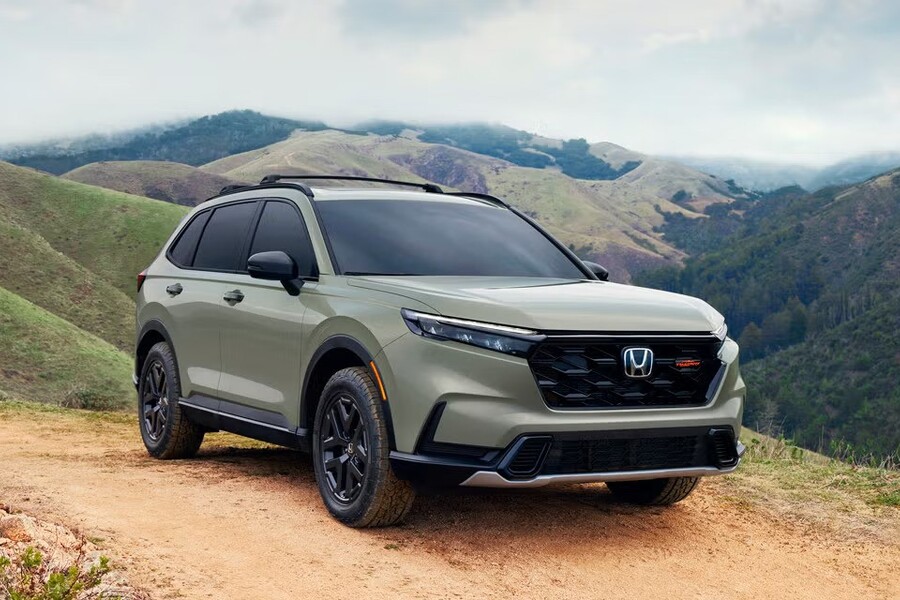In a significant strategic shift, Honda has announced it will relocate all production of its bestselling CR-V compact SUV from Canada to the United States, citing the need to mitigate the effects of tariffs introduced by the Trump administration. Simultaneously, the automaker is also shelving its ambitious $11 billion investment in electric vehicle (EV) manufacturing facilities in Ontario, Canada, due to waning EV demand across North America.
Strategic Shift Triggered by Trade Policy
Honda CEO Toshihiro Mibe revealed the production realignment during a press conference on Monday, stating, “This decision is aimed at minimizing the impact of tariffs and optimizing our supply chain across North America.” The move comes in direct response to ongoing U.S. trade policies that have imposed tariffs on goods crossing international borders, including automobiles assembled outside the country.
Currently, CR-V production is split between Honda’s facilities in Canada and the U.S. However, to avoid tariff penalties and streamline logistics, Honda will consolidate manufacturing operations at its Indiana and Ohio plants — the Greensburg and East Liberty facilities, respectively, which already produce both gas and hybrid CR-V models.
Impacts on U.S. Plants and Civic Hatchback Production
To accommodate the production shift, Honda is preparing to boost capacity at its U.S. factories. The Indiana plant, which also builds the Civic hatchback, will assume additional responsibility as Honda phases out Civic hatchback production in Yorii, Japan. That model will begin rolling off Indiana assembly lines later this summer. Meanwhile, Ohio’s East Liberty plant, which also produces the Acura RDX and MDX, will continue as a central hub for Honda’s North American manufacturing.
Honda says it will adjust production capacity and workflows at both plants to handle the increased volume without disrupting existing output or employment levels.
No Immediate Price Hikes — But Caution Ahead
Although the automaker has not yet increased sticker prices for its vehicles in response to the tariffs, Mibe signaled that price adjustments could be on the table. “We will closely monitor competitor pricing before determining whether price revisions are necessary,” he said, underscoring the broader market uncertainty triggered by trade tensions.
$11 Billion EV Investment in Canada Put on Ice
In a move seen as a setback for Canada’s growing EV ambitions, Honda also confirmed the indefinite postponement of its planned $11 billion investment in Ontario. Originally unveiled last year, the plan included the construction of a dedicated EV battery production facility in Alliston and a new EV assembly plant scheduled to begin production in 2028.
Citing sluggish growth in North America’s EV market, Mibe said, “We must reassess the pace and scale of our investments in line with current demand trends. The EV adoption curve in this region is not matching our earlier projections.”
This postponement is a significant blow to Canada’s aspirations of becoming a key player in the global EV supply chain and comes amid broader concerns about softening consumer interest in electric vehicles, supply chain volatility, and policy uncertainty.
What Happens to Honda’s Canadian Operations?
Despite the CR-V production shift and the EV investment delay, Honda has publicly reaffirmed its commitment to maintaining production volume and employment levels in Canada. In a statement to Car and Driver, a company spokesperson noted:
“The Honda CR-V and CR-V Hybrid are currently made at the East Liberty Plant in Ohio, the Indiana Auto Plant, and Honda of Canada Mfg. Honda continually looks for ways to very carefully optimize production to meet customer needs and market conditions. Regardless of potential future shifts in model production location, there are no plans to decrease overall Honda of Canada Mfg… production volume or employment.”
While no immediate layoffs or plant closures are expected, the long-term outlook for Honda’s Canadian manufacturing footprint remains unclear, especially if North American EV adoption continues to lag and trade tensions persist.
Why This Matters
Honda’s dual announcement underscores the profound influence that geopolitical policy and market trends exert on global automakers. The shift in CR-V production illustrates how tariffs can influence multinational companies to relocate manufacturing closer to consumer bases to avoid added costs. Meanwhile, the EV postponement reflects growing caution in the automotive sector as projections for EV adoption fall short amid high prices, range anxiety, and charging infrastructure concerns.
For the U.S., the news may be seen as a manufacturing win, with added investment and jobs at Indiana and Ohio plants. For Canada, however, it marks a double setback — both in lost production and in stalled investment that was intended to put the country at the forefront of North America’s EV supply chain.
What’s Next?
Industry analysts are watching to see how other automakers might respond to similar pressures. With elections looming and trade policies in flux, companies like Toyota, Ford, and General Motors may also recalibrate their production strategies. Additionally, Honda’s delayed EV plans could be revived if consumer demand picks up or if new government incentives are introduced.
For now, Honda will focus on consolidating its CR-V production in the U.S., rebalancing its global production lines, and reassessing the timing and scope of its transition to electric vehicles.

